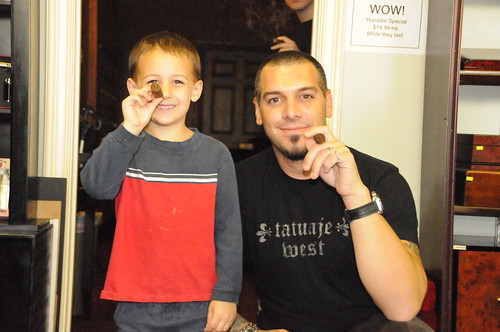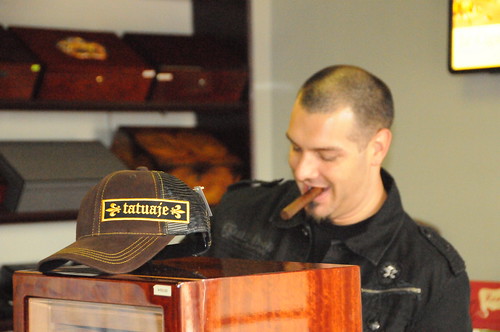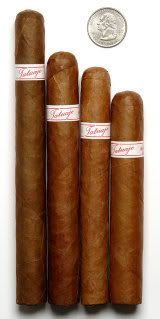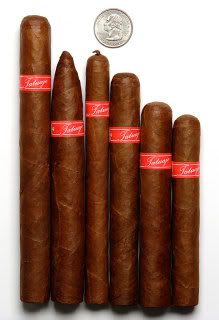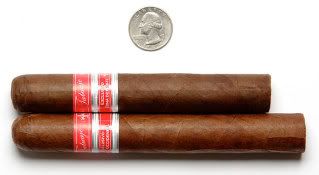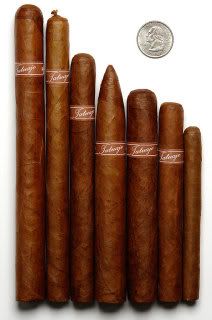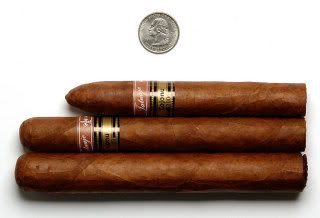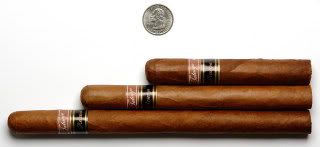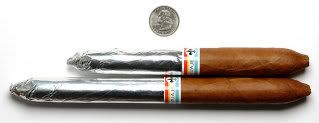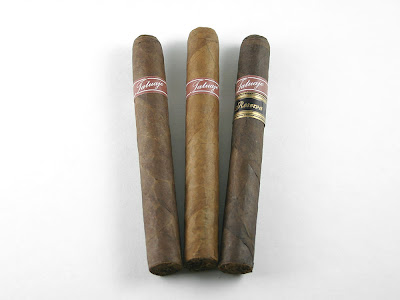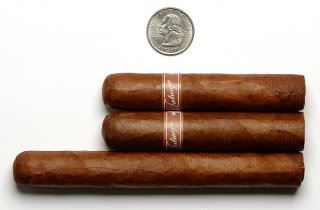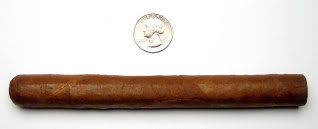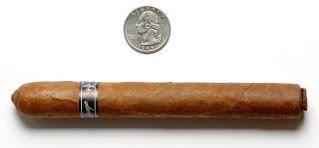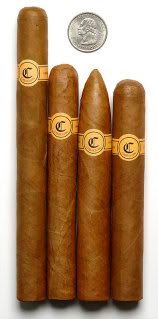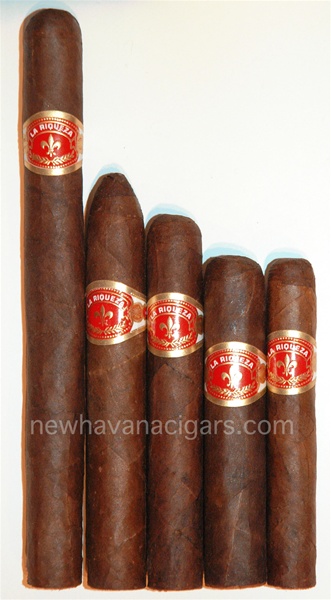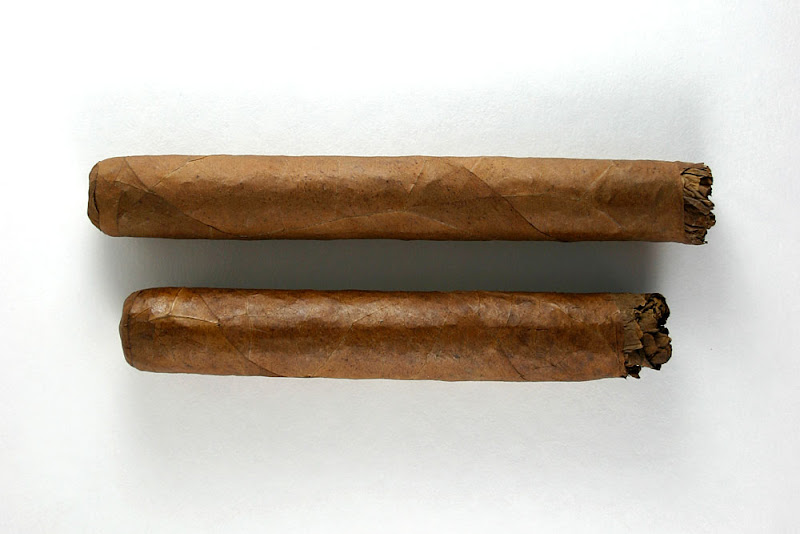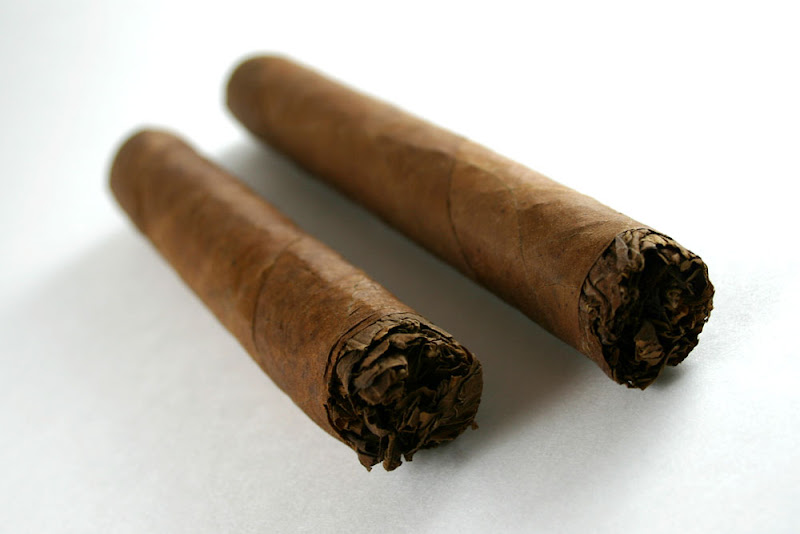Tatuaje – La Selección del Cazador
What the website says:
“
1) Spanish for Tattoo
2) An Old World Full Bodied Cuban Style Cigar created by Pete Johnson
[FONT="]Wrapper: Nicaragua Corojo 99
Binder: Nicaragua
Filler: Nicaragua[/FONT]
[FONT="]
[/FONT]
[FONT="]All Tobacco is 1st Generation Cuban Seed Grown in Nicaragua.
Cigars are rolled in classic Cuban tradition by Master Rollers in Little Havana Miami, FL U.S.A.
Headed by Maestro Tobaquero Jose Garcia.
Cigars are rolled with a beautiful Cuban triple-cap and are Medium to Full in flavor[/FONT][FONT="]”[/FONT]
Havana Cazadores - 6 3/8 [FONT="]x[/FONT] 43 – 25 per box – MSRP $10.00
Unicos ---------------- 6 1/8 [FONT="]x[/FONT] 52 -- 25 per box – MSRP $11.00
Noellas --------------- 5 1/8 [FONT="]x[/FONT] 42 -- 25 per box – MSRP $8.00
Tainos ----------------- 7 5/8 [FONT="]x[/FONT] 49 – 25 per box – MSRP $12.00
Especiales ------------ 7 ½ [FONT="]x[/FONT] 38 --- 25 per box – MSRP $10.00
Regios ----------------- 5 ½ [FONT="]x[/FONT] 50 --- 25 per box – MSRP $10.00
The original six. The ones that started it all. A.K.A. cabinet, A.K.A. Miami, B.K.A. Brown label. Pete’s first Tatuaje cigars to come out to the market, were released in 2003 after Pete met “Pepin”. In Pete’s own words: “It is as if I’m the conductor and Pepin’s the orchestra” Pete goes to Pepin with an idea of how he wants his cigar to taste like, and Pepin just goes ahead and picks out the tobacco leafs to be used. Rolled in the cigar factory “El Rey de los Habanos” (The King of the Habanos) on Calle Ocho, Little Havana, Miami, FL; which is headed by Don José “Pepin” García; a maestro tabacalero and torcedor from Baez, Cuba. Interesting enough as well, This was the first brand that Don Pepin made on his own. Which is particularly curious, for after Tatuaje was rated 90 in Cigar Aficionado, everyone wanted him to blend and roll their cigars.
This line is named after one of Pete’s dogs: Hunter (Selección del Cazador is Spanish for The Hunter’s Selection); and that is why the first letter of each vitola’s name spells H-U-N-T-E-R.
The line itself has a very Cuban-esque profile, not only due to appearance, which includes a triple cap, and traditional wooden boxes, but also due to every vitola in this line having its own blend (which in turn also give a very Cuban taste). Later came an addition:
Petite Tatuaje - 4 ½ [FONT="]x[/FONT] 32 – 50 per box – MSRP $3.50
Cojonu 2006 - 5 ½ x 52 – 25 per box - MSRP $13.00
Cojonu 2003 - 6 ½ x 52 – 25 per box - MSRP $13.00
Gran Cojonu - 6 ½ x 60 – 12 per box - MSRP $15.00
Cojonu 2009 - 6 ¼ x 52 – 25 per box - MSRP $13.00
Starting in 2003, Pete also released a special production of Tatuaje. A Series within the line that would be spicier than the regular Brown label line as the name indicates, for “cojonu” (short for “cojonudo”

is Cuban slang for “ballsy”. The Cojonu series are double banded, with the 1st band being the regular brown Tat band, and the 2nd having Cojonu and a year written on it, much in the fashion of Habanos’ ELs. But the year does not indicate the date when that cigar was only produced. It shows when that particular vitola came out to the market, for the Cojonu series is one were anew vitola is released every 3 years (except for 2006, that also gave us the Gran Cojonu, an un-banded Cojonu with a milder blend and a shagfoot wrapper that covers the foot, much like the Black Label Tat).
There were some blend changes in the Cojonu Series, for in August, 2005, the wrapper changed from a viso leaf to an aged ligero leaf. Quoting Pete:
“
Starting in August for all future production on Cojonu, the wrapper was changed from a Viso to a Ligero wrapper. Same wrapper but the Ligero allows us to extract the color easier and adds a little extra spice.”
“
Cojonu is graded from Rosado/Oscuro to Oscuro. Right now the color is brick red and we will do our best to continue with this but the wrapper needs time and demand has been very high. It was a tough battle between the two at first because they look the almost the same. The Viso tasted great off the bench and the Ligero was too strong. The Viso burned perfect, but after aging the Ligero stood out. Lots of chocolate and spice.”
“
I was afraid when tasting the Ligero wrapper fresh that it would burn the palate. Cojonu is supposed to be strong, a strength that hits you in the gut not on the palate. The Ligero just adds a small amount of extra spice. Most smokers would not be able to tell the difference between the two wrappers.”
Reserva J 21 ---- 5 [FONT="]x[/FONT] 50 ---- 25 per box
Reserva SW ----- 7 [FONT="]x[/FONT] 47 ---- 25 per box
Reserva A Uno - 9 ¼ [FONT="]x[/FONT] 47 – 10 per box
With a similar banding to the Cojonu one, the Reservas are three cigars (could be considered 6 with the Noellas Reserva, Regios Reserva and Reserva SW Maduro, which we’ll deal with later) each with a different blend. Nicaraguan filler and binder, with a ligero wrapper for the J 21, and aviso wrapper for the SW and A Uno. The names of each cigar are specially close to Pete:
“J 21” stands for 2 things: The Johnson family always wore a jersey with the number 21 on it (Johnson 21), for they have always been into sports. It also stands for Jos, the pet dog of a close friend of Pete, who died at the age of 21, the same year this vitola was released.
“SW” stands for Sir Winston, an H. Upmann cigar which was one of Pete’s favorites once. This vitola is not only the same size as the Sir Winston, but the wrapper is specially selected to be the closest in looks to the Cuban vitola.
“A Uno” is named liked that for it is an A size cigar that was one prototype Pepin made for Pete. It was banded A1 (“uno” is Spanish for “one”

and, when the prototype was selected, the name stayed.
RC184 - 7 ¼ [FONT="]x[/FONT] 57 --- 10 per box
RC233 - 9 1/8 [FONT="]x[/FONT] 55 – 10 per box
With the numbers in the vitolas names representing the cigar’s length in millimeters, the RC line includes just 2 cigars. 2 perfectos wrapped in foil from the head to the mid-section, where ye find a 3 color band on them, which makes them quite unique. Very similar to the old-style Cuban perfectos. And that is where the name comes from, “RC” means Retro-Cuban, with Pete wanting to recreate the cigars from long-lost years. The blend is meant to start strong and spicy, similar to the Cojonu blend, to mellow out throughout the length of each.

